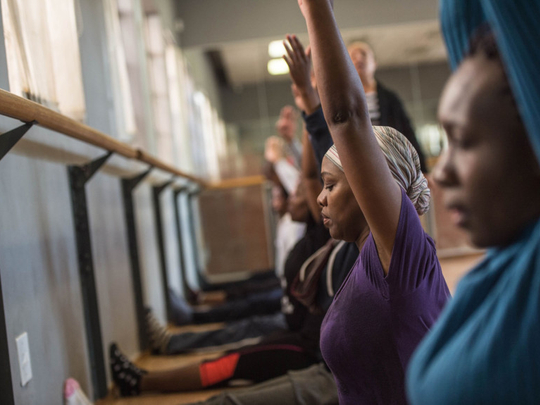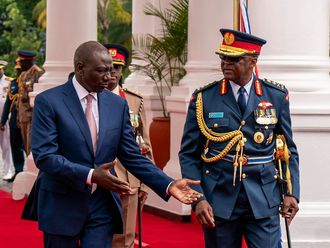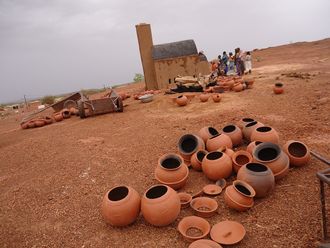
Soweto, South Africa: In a Soweto dance studio with yellowing mirrors, enthusiastic ballet students practise their first positions and plies in socks at the barre.
Classical dance, for decades confined to South Africa’s white minority, is finding its feet in the country’s black townships.
Twenty-two years after the end of apartheid, “We have beautiful contemporary dancers but not classical dancers,” said Dirk Badenhorst, head of the South African International Ballet Competition, seeking out rising stars across the continent.
The dearth of black talent is at least in part because historically “ballet was only for white people … and the ballet was only taught in the traditional white areas,” said Badenhorst, who is trying to shake things up with a new project to train township dance teachers in classical ballet.
Lessons take place in the heart of Soweto, a hop and a skip from the Hector Pieterson Museum dedicated to a key moment in the fight against apartheid, the uprising led by high school students in 1976.
“Up, up, up. Stomach, more, back,” says classical teacher Maria de Torguet, pointing at a less-than-perfectly-poised back or a lazily-held head among her eight students, all black adults.
“When I grew up … there was no ballet in townships. We had to go out in the town and pay for the lessons,” says one of them, Mmule Mokgele, taking a break between exercises at the barre.
“I am happy for my kids because ballet is coming to the township,” she added.
Aged 34, Mmule teaches contemporary dance and Afro-fusion in Soweto in a rundown school, whose yard has been turned into a car wash. But she decided to get trained to teach classical.
“Once you get to learn ballet, it disciplines you mentally, physically, it is easier for you to learn other dances,” added Mmule, short-cropped hair dyed red, with a baggy T-shirt and muscled legs beneath her black leggings.
Every Tuesday morning, she endlessly repeats the first position, plies and works on holding her arms under Maria’s attentive but relentless gaze.
In the afternoon she teaches her 10-year-old students what she learned in the morning.
“The fact that they experience the pain themselves right now and tomorrow they teach it, they have a better empathy with the children they are working with. They have a better understanding as how to explain and encourage the kids in what to do and how to do it,” said Badenhorst.
“It is often said that if you are a brilliant scientist you are not necessarily a brilliant science teacher . The same with ballet,” he added.
With his project, which aims to train a thousand teachers over the next three years, teachers and students are taking the same path together, he added.
Maria — brought in from Cuba, a country with close ties to South Africa in areas including politics and dance — is a patient instructor. With a firm voice, she asks one student to take off a scarf, another to remove a hood.
“It’s very difficult to teach them classical. In Cuba, teachers have studied classical dance for at least eight years,” added the petite 58-year-old brunette.
“Not here. I teach them to hold their bodies well. Concentration is also important, as much as passion. Without love nothing succeeds.”
Her task is not easy, all the less so since her English vocabulary is limited. Mmule says she and her fellow students have got used to understanding Maria’s commands.
Others have defied expectations even to be here.
“My friends are, like, why are you doing ballet? Why don’t you find something that would suit you as a man? But I love dancing,” said fellow student Ncepa Sitokwe, whose body is already toned by years of African dancing.
“Our traditional dancers did not expose us, with our African dances, we only do gigs to be seen when there is something celebrated. With this methodology, you are going to be seen outside South Africa,” he added.
Badenhorst has a dream. “When Benjamin Millepied was the director of the Paris Opera, he was talking about the lack of transformation in the Paris Opera,” he said, referring to the dearth of non-white dancers.
“So I would love in 8 years or 10 years the young kids from this project to land up in the Paris Opera.”












